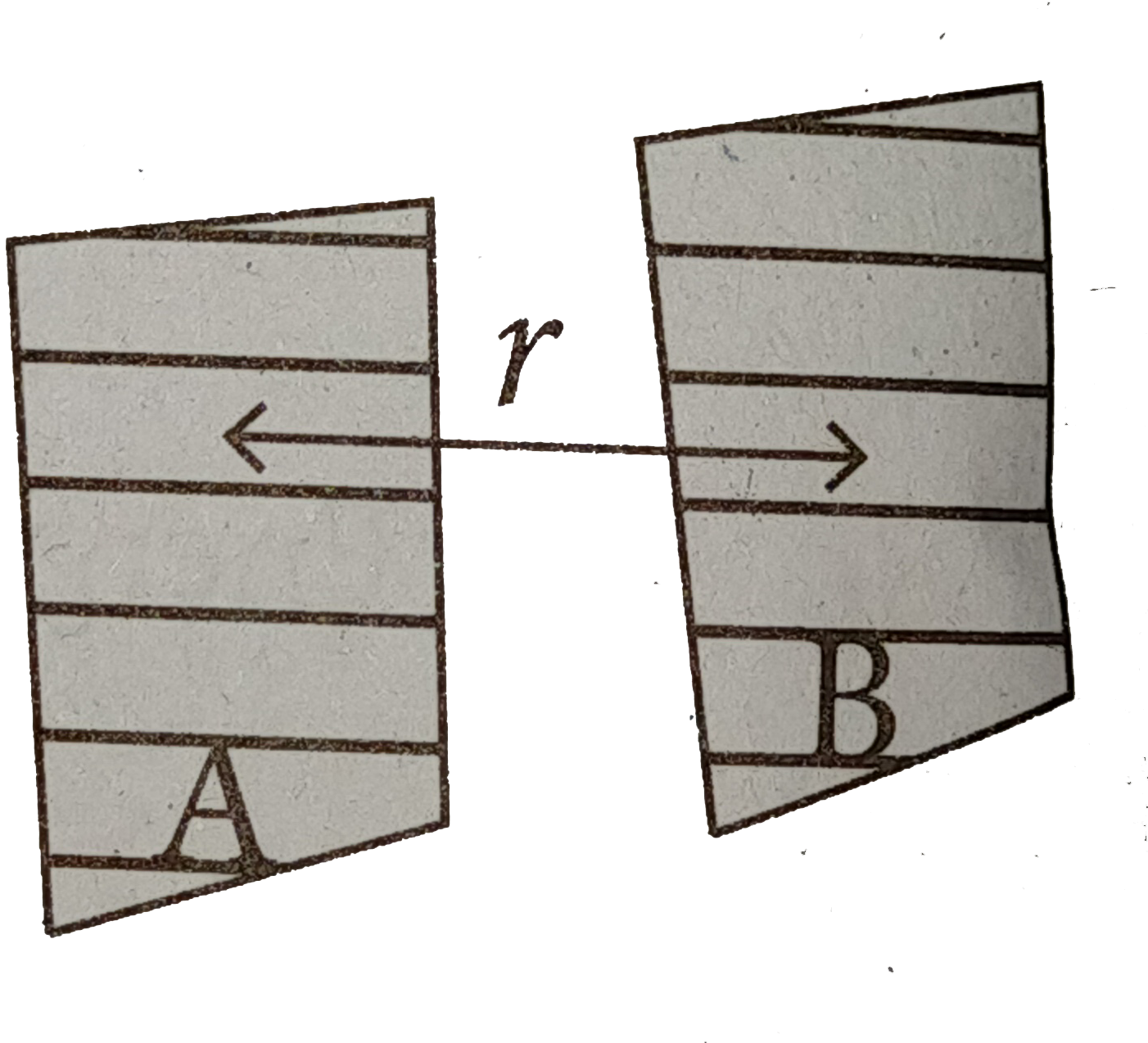The figure showsn tow parallel equipotential surface A and B kept at a small distance 'r' a part from each other. A point chang of Q coumomb is taken from the surface A to B. The amount of net work done will be
 Solution in Tamil
Solution in Tamil
zero
The correct Answer is:D
for equipotential suface
Similar Questions
What is meant by equipotential surface? Show that the amount of work done in moving a test positive charge along the equipotential surface is zero.
View SolutionAre the adjacent equipotential surfaces for the region shown in Figure 3.34, closer to each other than point a or near point b?
View SolutionOn the basis of your understanding of the following paragraph and the related studied concepts.
An equipotential surface is a surface with a constant value of electric potential at all points on the surface. The component of electric field parallel to an equipotential surface is zero, as the potential does not change in this direction. Thus, the electric field is perpendicular to the equipotential surface at each point of the surface. Further, say the direction of electric field electrical potential gradually fall with distance.
If a charge of 2 nC is taken from equipotential surface number 2 to 3, what is the amount of work done ?
View SolutionThe amount of work done in moving a charge from one point to another in an equipotential surface is _____ ?
View SolutionAn equipotential surface is a surface with constant value of potential at all points on the surface. What is the amount of work done in moving a 2µC charge between two points at 3 cm apart of an equipotential surface?
View SolutionIf a unit positive charge is taken taken from one point to another over an equipotential surface, then
View SolutionTwo indentical plane metallic surfaces A and B are kept parallel to each other in air separated by a distance of 1 cm, surface A is given a positive potential of 10 V and the outer surface of B is earthed. What is the work done in moving a charge of 20muC from point Y to point Z ?
View SolutionShow that work done in moving a test charge from one point to another point on an equipotential surface is zero .
View Solution
